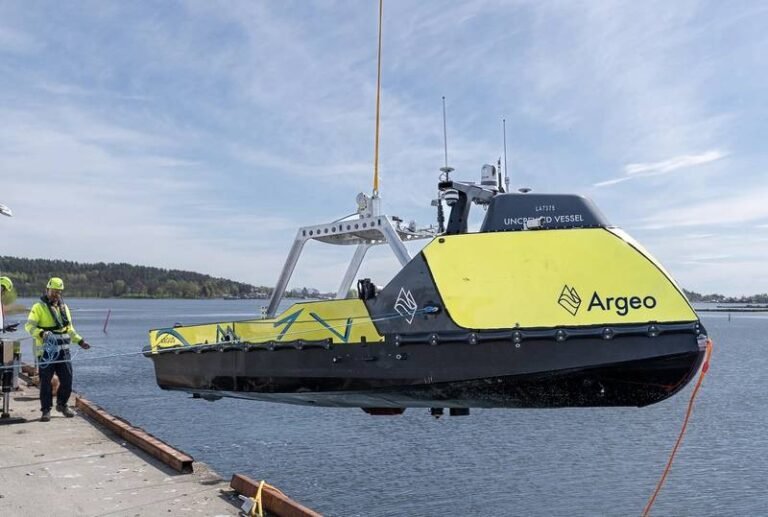Argeo Adopts Henriksen SOLUS Launch and Recovery System for USVs
Argeo has recently made history by becoming the first commercial customer to utilize the innovative Henriksen SOLUS launch and recovery system (LARS) for unmanned surface vehicles (USVs).
As a provider of advanced offshore survey and inspection services, Argeo relies on a fleet of unmanned and autonomous vehicles for its operations. The introduction of the SOLUS system now allows for the safe and efficient recovery of uncrewed USVs, even in challenging sea conditions.
The SOLUS system, developed by Henriksen AS in Norway, enables the 9-meter Argeo Argus USV to be seamlessly retrieved by the mothership using a telescopic mast mechanism. This technology allows the USV to be brought alongside the mothership and reconnected to the lifting wire, facilitating a smooth recovery process.
During deployment and remote operation, the USV’s mast remains retracted within its structure. When it is time for recovery, the mast is remotely raised by the USV’s controller, revealing the lifting and painter lines for connection to the mothership.
Even in rough seas with pitching and rolling motions, the SOLUS system ensures that the USV’s recovery lines are presented to the mothership’s crew for secure attachment. Once the connection is established, the USV can be lifted onboard swiftly and safely.
Henriksen AS, known for its expertise in marine lifting hooks, has expanded its offerings to include the Launch and Recovery division, with SOLUS being the latest addition to its product range. With a strong focus on safety and reliability, Henriksen AS has developed a system that enhances the capabilities of companies like Argeo in deploying unmanned and autonomous craft worldwide.
By incorporating the SOLUS system into the Argeo Argus USV, Argeo has taken a significant step towards optimizing its operations and expanding its capabilities in the offshore industry.
Overall, the adoption of the Henriksen SOLUS LARS marks a milestone in the integration of cutting-edge technology for unmanned surface vehicle operations, setting a new standard for efficiency and safety in offshore survey and inspection services.

